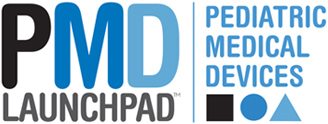Off-Label Use
Off label is a term used for a physician-directed use of a prescription drug, biological, or FDA-approved medical device that is not specified by the labeling approved by the FDA. The labeling may include any written material that accompanies a medical product. These may be package inserts, prescribing guidelines, or professional product instructions.
Off-label usage may include the use of a device that does not have FDA approval for use in children in a number of ways that are not indicated in the labeling such as:
- Use of the device in a disease state that is not consistent with its approved indication for adults
- Non-indicated patient population based on the adult labeling
- Route of administration
- Different anatomical location
- Duration of use
- Use of the device at a different point of disease state
The following are FDA links and Guidance Documents related to off-label use:
Off-Label Use Pediatric Device Registries
The use of devices to treat disorders affecting pediatric patients has increased significantly since the 1980s, but, given a lack of pediatric data, many of these devices continue to be used in an off-label manner. Given the difficulties in executing pediatric device research studies, device registries offer the opportunity to collect data from a broad population of patients to aid with efficacy and safety surveillance.
- Congenital Cardiovascular Interventional Study Consortium (CCISC): The CCISC is a non-profit organization dedicated to the advancement of surgical and interventional treatments for infant, child, and adult patients with congenital heart disease.
- Improving Pediatric and Adult Congenital Treatment (IMPACT) Registry: The IMPACT Registry collects data from leading academic institutions for patients with pediatric and adult congenital heart disease who undergo diagnostic and interventional catheterizations and electrophysiology procedures.
Off-Label Use of Medical Devices in Children
Despite widespread therapeutic needs, the majority of medical and surgical devices used in children do not have approval or clearance from the Food and Drug Administration (FDA) for use in pediatric populations. The clinical need for devices to diagnose and treat diseases or conditions occurring in children has led to the widespread and necessary practice in pediatric medicine and surgery of using approved devices for “off-label” or “physician-directed” applications that are not included in FDA-approved labeling. This practice is common and often appropriate, even with the highest-risk (class III) devices.
The legal and regulatory framework used by the FDA for devices is complex, and economic or market barriers to medical and surgical device development for children are significant. Given the need for pediatric medical and surgical devices and the challenges to pediatric device development, off-label use is a necessary and appropriate part of care. In addition, because of the relatively uncommon nature of pediatric conditions, FDA clearance or approval often requires other regulatory pathways (e.g., Humanitarian Device Exemption), which can cause confusion among pediatricians and payers about whether a specific use, even of an approved device, is considered experimental.
This policy statement describes the appropriateness of off-label use of devices in children; the use of devices approved or cleared through the FDA regulatory processes, including through the Humanitarian Device Exemption; and the important need to increase pediatric device labeling information for all devices and especially those that pose the highest risk to children.


